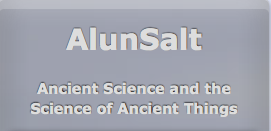The Bamburgh Research Project’s Blog is a blog dedicated to “bringing the past to life for everyone” by documenting and sharing the archaeology of Bamburgh Castle in Northumberland, England. During the excavation season, updates focus on the aforementioned castle, during the off-season the focus shifts to proximal projects like Bradford Kaims Wetland Heritage Research Project. The blog is authored by the collective forces behind the Bamburgh Research Project (BRP) and a link to the organization’s formal website identifies the bloggers as staff and students. The blog is targeted towards locals, those with a cursory interest in the project (or archaeology as a whole), and potential volunteers. There are a copious amount of entries, and while there are not very many comments, the blog’s counter indicates that the BRP Blog currently has 411 followers (and keep in mind, those followers are only those who have a blogging account, enabling them to formally register their followership.) I found the blog’s set up very accessible and engaging, providing fairly detailed methodology and historical context for those who desire it (with links to even more thorough end-of-season reports), while peppering entries with maps and photos. In between site reports, bloggers answer questions from readers, write entries about relevant topics that interest them, and explore the history of the site. I imagine theirs is more of a silent readership, perhaps older, that enjoys the constant stream of informative content.
I include Sídhe Screamed because of its mosaic approach to archaeology, and because it is authored by a college student (from the University of Illinois-Chicago, I might add, lest I be accused of shameless self-promotion.) The author, Cameron Sídhe, a Poetry major with a minor in Anthropology, summarizes his blog as “Neolithic Scotland. Outer Hebrides. Archaeology. Mythology. Biology. Pathology. Photography. Anything-that-catches-my-fancyology.” It is this eclectic approach, I believe, that makes his blog so accessible. His entries consist of “reblogged” international archaeology articles and artifact-, excavation site- or paleopathology-themed photographs. As this is a tumblr blog, public interest is gauged by the amount of “notes” on each entry; a quick survey of Sídhe Screamed shows that Sídhe’s entries are never without notes (both articles and photos), indicating an active and engaged readership. While entries range from the quirky to the paleobotanical, I found that the switches between light/somber, visually attractive/textually informative kept me reading Sídhe Screamed much longer than the BRP’s blog. Thus, I would argue that this blog—while not the most academic—successfully generates a public/”mainstream”/far-reaching appreciation for the aesthetic of archaeology and historical exploration, and public interest is a most excellent starting point for public engagement.


 Bones Don’t Lie: News and Commentary on Bioarchaeology and Mortuary Archaeology
Bones Don’t Lie: News and Commentary on Bioarchaeology and Mortuary Archaeology